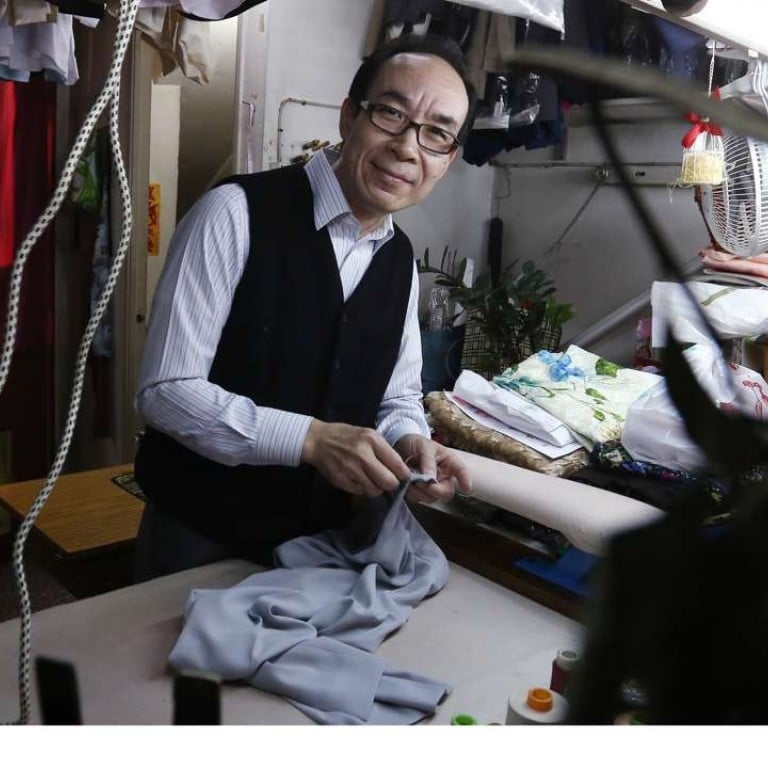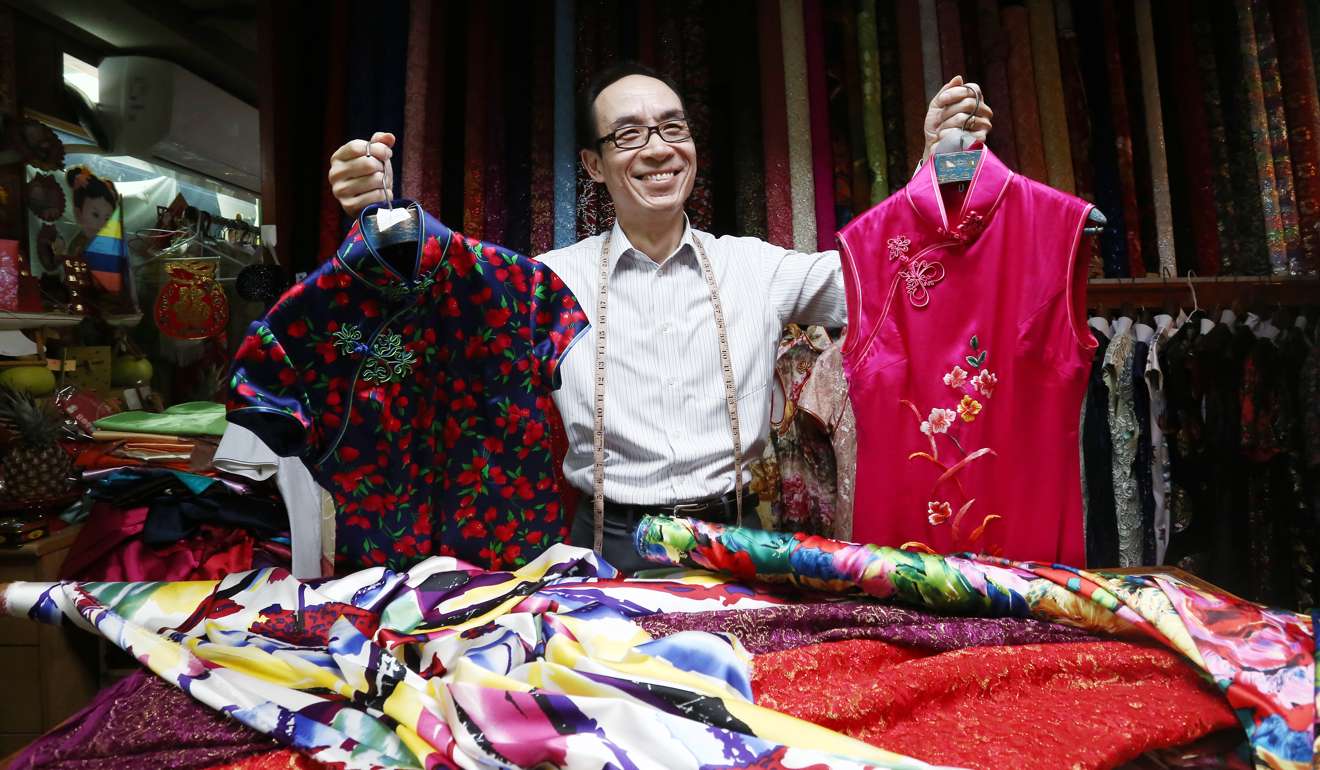
Up to HK$13,000 for at least four days of meticulous labour ... how a real Hong Kong cheongsam is made
Kan Hon-wing’s best creations do not come cheap at HK$5,500 to HK$13,000
The unremarkable storefront of Mei Wah Fashion in Sheung Wan hides a wonder – the making of the traditional Chinese cheongsam. Boxes of fabric are piled high in the corner, while dozens of finished cheongsams hang everywhere.
“The process has to be meticulous. You have to pay attention to every detail,” he says.
The time-honoured sewing techniques involved in making cheongsams will soon be included in Hong Kong’s first intangible cultural heritage list proposed by the Leisure and Cultural Services Department.

If the proposal is approved, it will form the basis for the government to prioritise resources in preserving the traditional craft.
Cheongsams, also known as qipao, became popular in Shanghai in 1925, according to the Chinese Qipao Society. Female students became their main users as the garment symbolised knowledgeable women.
Nowadays, some primary and secondary schools in Hong Kong still use plain-rimmed blue cotton cheongsams as uniforms for their female students.
Kan says it takes at least four days to make one cheongsam. “The longer you spend on it, the better it is,” he says.
As a first step, Kan says: “We need to understand what the dress will be used for, such as what event it’s for. The tailor will then, based on experience, find the type of fabric suitable for the occasion.”
Cheongsams made with the most expensive embroidered material sell for HK$5,500 to HK$13,000 in Kan’s shop.

“If you want to cut costs by saving on materials, you won’t get a perfect cheongsam,” he says.
Asked if he was threatened by rivals selling cheaper dresses, Kan says he welcomes the competition. “Everyone’s style is unique and irreplaceable.”
There are dos and don’ts in his creations. It is all but forbidden to put a zipper on the back of the cheongsam.
“In my view, putting it on the back will ruin the design of the stand-up collar. And unlike Western dresses, the traditional Chinese cheongsam seldom has a zipper on the back. It should be put on the side,” he says firmly.
To Kan, the body-hugging qipao not only complements the beauty of a female figure, it is also a reflection of his artistic know-how.
“Every woman, short or tall, thin or fat, looks good in a cheongsam,” he says. “Otherwise, it’s the tailor’s problem.”

